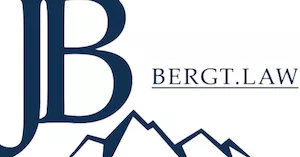Introduction to International Tax Transparency in the Digital Age
In a significant development, approximately 50 countries, including Switzerland, have committed to an expanded scope of international automatic exchange of information (AIA) respectively Common Reporting Standard (CRS) in tax matters, encompassing crypto assets on November 10, 2023, effective from January 1, 2026. This commitment represents a pivotal shift in the global financial regulatory framework, underscoring the increasing importance of transparency in the burgeoning field of digital assets.
Revision of Standards by the OECD
On June 8, 2023, the OECD Ministerial Council adopted revised recommendations for AIA, encompassing the Common Reporting Standard (CRS) and introducing the new Crypto-Asset Reporting Framework (CARF). This revision clarifies CRS interpretations and aligns practices with emerging trends in crypto assets.
European Union's Directive on Administrative Cooperation (DAC8)
- DAC8's Introduction and Scope: The EU Economic and Financial Affairs Council (ECOFIN) introduced DAC8 on May 16, 2023, to incorporate new tax transparency requirements for crypto-asset service providers within the EU market. This directive, aligning with the OECD's framework, introduces due diligence and reporting obligations for these providers, aiming to ensure tax compliance on gains from crypto-asset trading and investment.
- Implementation and Enforcement Timeline: DAC8, adopted on October 17, 2023, requires implementation by all EU member states, with enforcement slated for 2026, mirroring the OECD's timeline.
Crypto-Asset Reporting Framework (CARF) and Its Implications
- Design and Purpose of CARF: CARF addresses the challenges posed by the decentralized nature of crypto-assets and the limited regulatory oversight of new intermediaries like crypto exchanges and wallet providers. It aims to harmonize the collection and exchange of information on crypto-asset transactions with existing financial transparency standards.
- CARF's Implementation in the EU: The EU's transposition of CARF under DAC8 into Directive 2011/16/EU and subsequently into domestic laws ensures consistent application across member states. DAC8 supplements the EU's existing MiCA regulatory framework, broadening the scope to include both EU and non-EU service providers with EU customers.
Enhanced Common Reporting Standard (CRS) and Additional Amendments
- CRS Model Amendments: The CRS model, following its first comprehensive review, now includes amendments to capture new digital financial products and improve reporting quality. These changes aim to ensure parity between traditional financial assets and emerging digital products.
- Integration with CARF and DAC8: The CRS model is aligned with CARF to avoid duplicative reporting, focusing on digital assets not necessarily covered by CARF. This integration demonstrates a concerted effort to maintain a robust and comprehensive tax transparency framework.
Registration Requirements and Reporting Obligations
- Reporting Crypto-Asset Service Providers: Entities engaged in crypto-asset transactions or providing transaction platforms are subject to customer due diligence and annual reporting. This includes a wide range of digital assets, emphasizing the broad scope of the new regulations.
- Registration Mandates: In addition to the OECD's model, the EU's DAC8 mandates registration for crypto-asset service providers not already under EU regulatory oversight. This includes both EU and non-EU providers servicing EU customers, echoing the approach seen in DAC7.
Implementation Challenges and Future Directions
- Compliance and Implementation Challenges: Financial institutions and crypto-service providers must navigate the complexities of these new regulations, balancing compliance with operational efficiency. The interplay between different regulatory frameworks necessitates a comprehensive understanding of their cumulative impact.
- Future Developments and Global Alignment: The ongoing work by the OECD and the EU's implementation strategies highlight the dynamic nature of the regulatory landscape. Continued efforts to refine the frameworks and align global standards will shape the future of financial transparency in the digital era.
Conclusion and Implications for Financial Institutions
The advent of CARF, the revised CRS, and DAC8 signifies a new era in tax transparency, particularly in the realm of crypto assets. This evolving landscape presents both challenges and opportunities for financial institutions and service providers. Compliance with these frameworks will be crucial for maintaining market integrity and upholding global financial standards.
Source: Communication from the Swiss Federal Department of Finance
Executive Summary:
- The expanded international AIA, including crypto assets, marks a significant shift in global financial regulation, emphasizing tax transparency.
- The OECD's revision of AIA standards and Switzerland's commitment to implement these changes reflect a global trend towards financial compliance in digital assets.
- The EU's DAC8 introduces comprehensive tax transparency requirements for crypto-asset service providers, aligning with the OECD's framework.
- CARF aims to harmonize the information exchange on crypto-asset transactions, while the CRS amendments expand the scope to new digital financial products.
- Financial institutions and crypto-service providers face implementation challenges, underscoring the need for a holistic approach to regulatory compliance.
- Future developments in global tax transparency standards will continue to evolve, driven by ongoing work by the OECD and implementation efforts within the EU.
The content of this article is intended to provide a general guide to the subject matter. Specialist advice should be sought about your specific circumstances.

